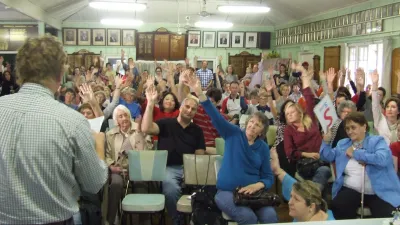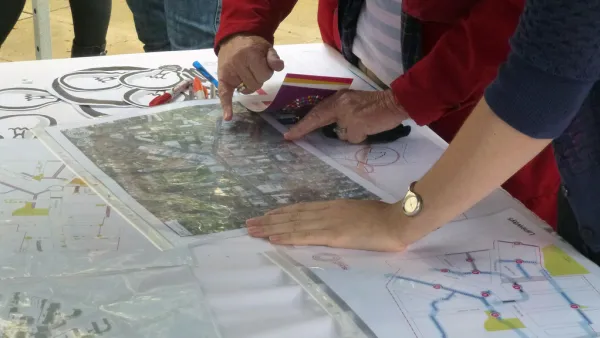Public meetings often disprove the notion that communities have a unified stance on any issue. With this in mind, we must move past trying to find consensus and focus on uplifting the most marginalized voices.

When it comes to community development projects in poor urban neighborhoods, practitioners and scholars often ask a seemingly simple question: what does the community want? Since the 1960s and the War on Poverty, the community development field has embraced (to at least some extent) the idea of “community control.” Rooted in the Black Power Movement, community control originally referred to Black people reclaiming control over schools, businesses, and other institutions that affect Black neighborhoods. Today, community control is a normative idea that the community—broadly defined—should have a say and determine neighborhood priorities. While developers sometimes agree to formal contractual obligations like community benefits agreements (CBAs), no mechanism of achieving community control has been more common than the public meeting.
Critiques of participatory processes abound. Political scientists Katherine Einstein, David Glick, and Maxwell Palmer find that public meeting participants tend to be white homeowners—meaning public meetings will disproportionately serve white homeowners’ interests. Sociologist Michael McQuarrie argues that community-based organizations, motivated by organizational survival, use participation and consensus organizing to establish legitimacy and curry favor with funders. As a result, participation tends to support elite authority rather than challenge it. Focusing on affordable housing debates in the Bay Area, New York Times journalist Conor Dougherty shows how public meetings are in effect veto points that can block new development. New projects generally require community agreement in order to move forward, and so all it takes is a handful of opponents to signal a lack of consensus. By design, then, public meetings give the people who say “no” a much louder voice than the people who say “yes.”
For most observers, the solutions are technical. More meetings. Better attended meetings. Differently designed meetings. In short, the challenge is to fine-tune public meeting practices in ways that elevate the authentic voice of the community.
While conducting research for my book, tentatively titled Constructing Community and forthcoming with Princeton University Press, I came to question these and other assumptions. I spent four years conducting fieldwork in some of Boston’s highly segregated and disadvantaged neighborhoods. I wanted to understand who made important decisions about affordable housing, public transit, economic development, and open recreational space. I was particularly interested in the relationship between public participation and community control.
I argue that no participatory process can accurately reflect the voice of the community, no matter how well run. The reason is fundamental: there is no such thing as “the” community. As sociologists Mary Pattillo and Monica Bell persuasively show in separate studies, opinions and experiences with institutions vary, even in demographically segregated neighborhoods. To say that “the community” is in support of anything is a misnomer.
Community development practitioners, by contrast, generally assume there is in fact a community that has a voice; community control requires the community to control development, after all. When those in power circumvent participating community members, it is clear community control has not been achieved. But how do we evaluate community control when some community members might oppose a project that others pursue—did the community control the project in those cases?
...
FULL STORY: It’s Time to Move On From Community Consensus

Analysis: Cybertruck Fatality Rate Far Exceeds That of Ford Pinto
The Tesla Cybertruck was recalled seven times last year.

National Parks Layoffs Will Cause Communities to Lose Billions
Thousands of essential park workers were laid off this week, just before the busy spring break season.

Retro-silient?: America’s First “Eco-burb,” The Woodlands Turns 50
A master-planned community north of Houston offers lessons on green infrastructure and resilient design, but falls short of its founder’s lofty affordability and walkability goals.

Test News Post 1
This is a summary

Analysis: Cybertruck Fatality Rate Far Exceeds That of Ford Pinto
The Tesla Cybertruck was recalled seven times last year.

Test News Headline 46
Test for the image on the front page.
Urban Design for Planners 1: Software Tools
This six-course series explores essential urban design concepts using open source software and equips planners with the tools they need to participate fully in the urban design process.
Planning for Universal Design
Learn the tools for implementing Universal Design in planning regulations.
EMC Planning Group, Inc.
Planetizen
Planetizen
Mpact (formerly Rail~Volution)
Great Falls Development Authority, Inc.
HUDs Office of Policy Development and Research
NYU Wagner Graduate School of Public Service




























